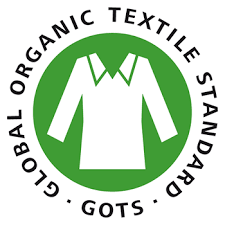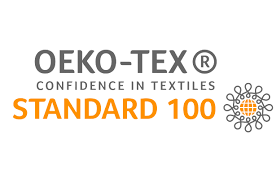
Unraveling the GOTS Certification: What It Means for Your Textiles
In the world of sustainable fashion, certifications are key indicators of a product's environmental and social credentials. One of the most respected in this field is the Global Organic Textile Standard (GOTS). Here's a deep dive into what GOTS certification entails and how it elevates the fabrics you wear.
What is GOTS Certification?
GOTS is an international, leading textile processing standard for organic fibers, including cotton, wool, and silk. Launched in 2006 by four major standard-setting organizations for organic agriculture, GOTS sets rigorous criteria to ensure that textiles are produced with a commitment to ecological integrity and social responsibility.
Key Elements of GOTS Certification:
1. Organic Fiber Content:
-
Minimum Organic Fiber: Products must contain a minimum of 70% certified organic fibers for the first processing level, with 95% or more for the label "organic".
2. Environmental Standards:
-
Chemical Use: GOTS prohibits the use of toxic heavy metals, genetically modified organisms (GMOs), and azo dyes. It also limits the use of synthetic chemical inputs, promoting the use of natural, biodegradable substances.
-
Water and Energy: There are strict regulations on water usage, wastewater treatment, and energy consumption, aiming to reduce the environmental footprint of textile production.
3. Social Criteria:
-
Labor Conditions: GOTS certification requires compliance with the International Labour Organization (ILO) conventions, ensuring fair labor practices, safe working conditions, no child labor, and fair wages.
4. Traceability and Transparency:
-
Supply Chain Control: There's an emphasis on tracking the flow of organic fibers from the field to the final product, ensuring no mixing with conventional fibers. This traceability is audited by independent certification bodies.
5. Processing and Manufacturing:
-
Eco-friendly Techniques: All processing stages, from spinning to dyeing and finishing, must adhere to ecological criteria. This includes using low-impact dyes and safe, biodegradable chemicals.
The Journey to GOTS Certification:
-
Application: Companies must apply to one of the accredited certification bodies for GOTS, which are spread across the globe.
-
Audit: An initial audit checks the company's processes against GOTS criteria. This includes a review of documentation, on-site inspections, and possibly testing of materials.
-
Certification: If the audit is successful, the company receives certification for a period, after which ongoing annual inspections ensure continued compliance.
-
Labeling: Certified products can bear the GOTS logo, which acts as a seal of assurance for consumers looking for genuinely organic textiles.
Why GOTS Matters:
-
Consumer Trust: The GOTS label offers a straightforward way for consumers to choose products that align with their values of sustainability, health, and ethics.
-
Environmental Impact: By setting high standards for chemical use and waste management, GOTS helps in reducing pollution and conserving natural resources.
-
Social Responsibility: It ensures that workers in the textile industry are treated fairly, promoting human rights within global supply chains.
-
Market Influence: GOTS certification can drive market trends towards more sustainable practices, encouraging other brands to follow suit or improve their standards.
GOTS certification isn't just a label; it's a commitment to a better way of making clothes. For consumers, choosing GOTS-certified products means supporting a system that values the environment, workers, and the health of the end-user. As the demand for transparent and sustainable practices grows, GOTS stands as a beacon of integrity in the textile industry, making it easier for us to make informed choices about what we wear. Remember, when you see the GOTS logo, you're not just buying a piece of clothing; you're investing in a more sustainable future for our planet.
XXX Jessie



Dejar un comentario
Este sitio está protegido por hCaptcha y se aplican la Política de privacidad de hCaptcha y los Términos del servicio.